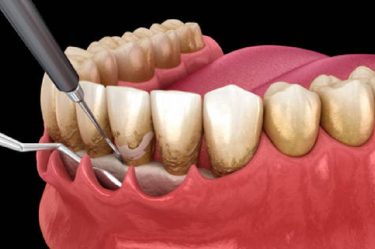GIC vs Composite: Tooth-Colored Restorations

As a dentist, you often face the dilemma of choosing the right restorative material for your patients. When it comes to tooth-colored restorations, the choice between Glass Ionomer Cements (GIC) and composites can be tricky. Both materials have their advantages, but which one should you prefer for different clinical scenarios?
In this blog, we will compare the properties, indications, and performance of both GICs and composites, helping you make an informed decision about which material will serve your patients’ needs best, providing not only an aesthetic result but also durability and long-term success.
What are GIC and Composite Restorative Materials?
Glass ionomer cements (GICs) are adhesive, tooth-colored, anticariogenic restorative materials composed of an acid-soluble calcium fluoroaluminosilicate glass in powder form and polyacrylic acid in liquid form. These components are mixed in specific ratios for the required usage during clinical procedures.
Composite is a restorative material composed of a mixture of two or more macromolecules, including filler particles and coupling agents in a resin matrix. These materials are tooth-colored and highly durable, making them ideal for any type of restoration, whether anterior or posterior.
Read Also – Dental Cement: Types, Uses & Best Picks for Long-Lasting Restorations

Indications for GIC:
- Class V restorations
- Luting agent for restorations and orthodontic bands and brackets
- Core build-up
- Atraumatic restorative technique
- Intermediate restorative material
- Sometimes, as pit and fissure sealant
- Restoration of erosive or abrasive lesions
- Restoration of primary teeth
- As liner or base for pulp protection
Indications for Composite:
- Restoration of anterior and posterior teeth (directly or indirectly)
- To build cores (post core)
- Bonding of orthodontic brackets, etched cast restorations, ceramic crowns, posts, inlays, onlays and laminates
- Pit and fissure sealant
- Esthetic laminates
- Repair of chipped porcelain restorations

Comparing GIC vs Composite
1. Durability and Compressive Strength:
GIC – Glass ionomers are reasonably durable but not up to the level of composites. They are moderately durable for areas that withstand moderate occlusal forces and are suitable for smaller restorations.
Restorative GIC has a compressive strength of 150 MPa.
Composites – They can easily withstand high occlusal forces. Their robust structure makes them suitable for both anterior and posterior restorations over a long period. These have a compressive strength ranging from 240–460 MPa, depending on the type of filler particle.
2. Aesthetics:
GIC – It has a tooth-colored, translucent appearance but cannot match the tooth’s exact shade. It is often easily identifiable and less aesthetically pleasing. These are not suitable for teeth that require exact shade matching.
Composite – However, composite restorations offer excellent esthetics, as they can be color- and shade-matched to the teeth to such an extent that it can be difficult to distinguish between the restoration and the natural tooth structure. These can be used for anterior restorations that require a natural tooth-like appearance.

3. Tooth Preservation and Cavity Size:
GIC – GIC is suitable for use in small to medium-sized cavities. It lasts longer in non–load-bearing areas and can be used as a preferred restorative material for root caries and small restorations.
Composite – Composites can be used in cavities of all sizes, from small to large, in both anterior and posterior teeth, including high load-bearing areas. Also, when compared to GIC, they require minimal tooth preparation, helping preserve the natural tooth structure, and thus contribute to a more conservative restorative approach.
4. Adhesion:
GIC – GIC bonds well to enamel and dentin. The mechanism of adhesion is chemical. The bonding occurs due to the reaction between the carboxyl groups of the polyacids and the calcium in the enamel and dentin. The bond to enamel is always stronger than that to dentin, likely due to the greater inorganic content and homogeneity of enamel.
Additionally, some conventional glass ionomer systems may require mild dentin conditioning to remove the smear layer, which can be done using mild acids such as 10% polyacrylic acid, followed by rinsing and removal of excess water, leaving the dentin slightly moist. But this is not followed with the newer types of GICs.
The chemical bonding achieved by the GIC helps to seal the tooth, minimizing the risk of leakage and further decay, and thus prevents secondary caries. Also, glass ionomer releases fluoride for an extended period, further reducing the risk of secondary decay.
Composite – Composites do not adhere directly to the tooth or any dental surface. They require micro-mechanical bonding to the tooth surface to ensure reliable adhesion and stability. For this, acid etching with 37% phosphoric acid and bonding agents are used to ensure a long-lasting restoration with minimal risk of filling fracture compared to GIC. One drawback of composites is that they do not directly prevent secondary caries since there is no fluoride release by them.
5. Toxicity and biocompatibility –
GIC – The pulpal response to GIC is classified as mild. However, luting-type GIC can be more acidic than the restorative type due to a lower powder-to-liquid ratio. Temporary sensitivity may occasionally be experienced by some individuals due to fluoride release post-restoration. In deep cavities, a layer of calcium hydroxide is recommended to prevent pulpal exposure and aid in healing. GIC is non-toxic in nature and is suitable for various dental applications.
Composite – Composite fillings are generally safe and well-tolerated, provided there is sufficient thickness of dentin beneath the restoration. However, composites can release some resin components for several weeks after insertion. This may contribute to the material’s inherent chemical toxicity to the pulp and may also cause allergic reactions on contact with the oral mucosa in some patients.
In deep cavities, a glass ionomer liner can be used for pulpal protection. When composites are used near gingival tissues, careful placement is essential to prevent inflammatory responses associated with overhangs and microleakage. Contamination should also be avoided by using proper rubber dam isolation. However, compared to GIC, composites are generally better tolerated, and sensitivity is less frequent and usually mild.
6. Procedure time:
GIC – GIC restorations are comparatively less time-consuming, and the procedure is much more straightforward compared to other restorative materials.
Composite – In contrast, composite restorations involve a more complex procedure and require additional time for proper isolation, meticulous etching, layering, and curing. However, the time invested is often compensated by the natural tooth-like appearance and higher durability of the restoration.
7. Wear resistance and hardness:
GIC – GICs are more susceptible to toothbrush abrasion and occlusal wear compared to composites. In areas of high occlusal forces, they are unable to withstand the load and often wear down at a faster rate.
GICs have a hardness of about 49 KHN, which is significantly lower than that of composites.
Composites – Composite restorations are highly resistant to wear and can maintain their structure under high occlusal forces. Their ability to withstand such forces contributes to their longevity.
It is of paramount importance that the restorative material has a hardness at least similar to that of the dentinal substrate. The hardness of enamel is about 343 KHN, and that of dentin is approximately 70 KHN. While enamel hardness cannot currently be matched by any direct restorative material, dentin hardness can be matched to some extent. Some hybrid composites have a hardness range of 60–117 KHN, and some microfilled composites range from 22–80 KHN, making them a superior restorative material compared to GICs.
8. Long- term staining:
GIC – GICs are more prone to staining and discoloration. The lack of adequate translucency and their relatively rough surface texture contribute to the material’s tendency to stain over time.
Composites – These, on the other hand, are highly resistant to staining and maintain their color and appearance, ensuring long-term esthetic appeal.
9. Contraction and expansion:
GIC – GICs exhibit minimal contraction and expansion, which helps reduce the risk of microleakage and secondary decay.
Composites – Composites also demonstrate minimal contraction and expansion, contributing to excellent sealing ability and lower chances of restoration failure.
10. Cost
GIC – Glass ionomer cements are a more economical option, making them a cost-effective choice for patients seeking a budget-friendly restoration.
Composite – Composites are moderately expensive, given their excellent esthetics and durability. Their exceptional properties make them a worthwhile investment.
Summary :
| Property | GIC (Glass Ionomer Cement) | Composite |
| Durability & Strength | Moderate, compressive strength 150 MPa | High, compressive strength 240–460 MPa |
| Aesthetics | Tooth-colored but less shade-matching | Excellent shade matching, ideal for anterior |
| Tooth Preservation | Small to medium cavities, non-load bearing | All cavity sizes, minimal tooth prep |
| Adhesion | Chemical bonding | Mechanical bonding, acid etching required |
| Toxicity & Biocompatibility | Non-toxic, mild pulpal response | Safe with enough dentin thickness left, resin components may leak sometimes |
| Procedure Time | Quick, straightforward | Longer, requires etching, layering, curing |
| Wear Resistance & Hardness | Susceptible to wear, hardness 49 KHN | Highly resistant to wear, hardness 60–117 KHN |
| Staining | Prone to staining | Resistant to staining |
| Contraction & Expansion | Minimal, reduces leakage | Minimal, excellent sealing |
| Cost | More economical | Moderately expensive |
The debate of Glass Ionomer Cements (GIC) versus composites centers around their unique strengths and applications in restorative dentistry. GIC is an excellent choice for smaller, non-load-bearing restorations, offering cost-effectiveness and fluoride release, making it ideal for pediatric and adult patients. It’s simple application and chemical bonding provide reliable results, especially when aesthetics are secondary.
Composites, on the other hand, are the go-to option for aesthetic-driven restorations, offering superior shade matching, durability, and wear resistance. While they require more time for placement and are costlier, their long-term benefits, including exceptional strength and natural appearance, make them a worthwhile investment for anterior and high-load-bearing restorations. To explore a variety of GIC and composite options, visit DentalKart and find the best materials for your practice.




No Comment